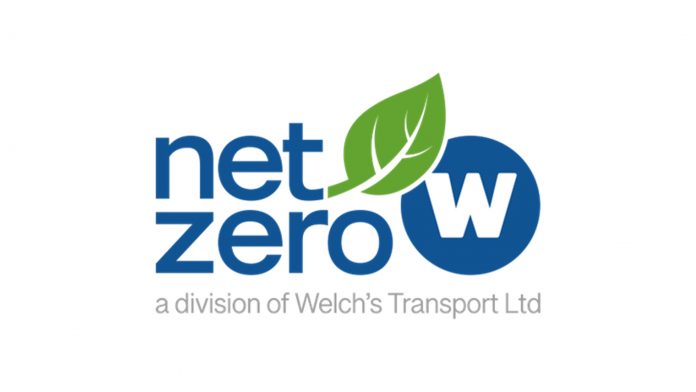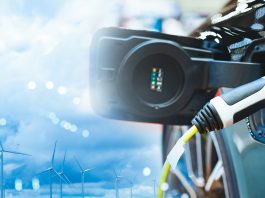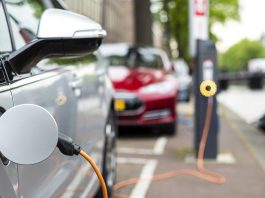The UK government is leveraging its £290 billion public procurement process expenditure to accelerate achieving net zero targets by 2050.
Bids for contracts worth £5m or more (excluding VAT) must commit to reaching net zero targets by 2050. Moreover, organisations must provide a Carbon Reduction plan demonstrating the bidder’s commitment to achieving net zero, showcasing the specific carbon reduction measures that will apply when the bidder is delivering the contract and demonstrating a baseline emissions footprint.
These procurement regulations are likely to be the first of many sustainability-related measures to be introduced as the government aims to reach its ambitious targets. The impact of these measures will be felt throughout the entire supply chain as suppliers and subcontractors will be scrutinised for their own carbon emissions. Moreover, high-emitting organisations are at risk of becoming less attractive partners.
British industry can lead the global transition to net zero, and the transport system is already undergoing an overhaul. The burgeoning use of cargo bikes and light commercial vehicles demonstrates a systemic change in decarbonising the supply chain and realising the commitment to end the sale of new petrol and diesel cars and vans by 2030. Additionally, all new vehicles will be zero emission at the tailpipe by 2035.
However, it is well established that HGVs are prime contributors to carbon emissions: 89% of all goods transported in Great Britain travel by HGV, while 98% of consumer products and machinery are transported by road freight.
The UK government has pledged to end sales of new, non-zero emissions HGVs weighing 26 tonnes and under by 2035. By 2040, all new HGVs sold in the UK will be zero emissions. By reducing and removing HGV emissions from the supply chain, the UK industry will be in a strong position to meet its wider net zero targets.
Electric vehicles: design and deployment
The shift towards fully electric deliveries is demonstrably gaining momentum. The increasing demand for more sustainable modes of transport is driving the development of new truck technology, including hydrogen, electric, and hybrid versions.
Supporting the transition from fossil fuels has driven the government’s investigation into the future of road freight: the Future of Freight Plan. Developed in partnership with industry specialists, the plan sets out the government’s vision for the freight sector, including steps to support future net zero targets.
The Guinness World Record for the longest fully electric delivery distance travelled on one charge stands at 682.88 miles (on a closed track). This demonstrates that advances in battery technology mean that fully electric HGVs are far more practical for journeys: particularly urban routes where trucks return to a depot on a daily basis.
Tevva, a UK-based electric truck start-up, has brought its 7.5-tonne electric HGV to market. With a range of up to 141 miles, the company has supplied its first lorries to Royal Mail and Travis Perkins. The company aims to manufacture 1000 trucks annually by the beginning of 2024. With the average haul length in the UK at 66.4 miles, drawing on British electric HGV innovation will support a significant reduction in greenhouse gas emissions without affecting drivers’ ability to deliver goods on time for many organisations.
While it is positive to see the increase in fully electric options for smaller trucks (18 tonnes or less), the demand for electric vehicles of all types has placed pressure on the electric battery supply chain that is still unresolved. One UK organisation working to accelerate fleet electrification through the development of battery solutions is Zenobē, the UK’s leading operator of battery storage. Powering 25% of the UK electric bus market already, Zenobē intends to support its customers with a minimum of 500 MWhr of additional grid-connected batteries, 1,000 electric buses or vehicles, and the necessary infrastructure software systems in the next two years.
In the meantime, hydrogen-electric hybrid HGVs could prove a short-term solution to manage net zero targets from diesel trucks to fully electric alternatives. Tevva is already producing electric HGVs with hydrogen fuel cell range extenders.

However, with no existing supply of green hydrogen – produced from renewable sources – and the steep cost of producing hydrogen fuel cells, it is unlikely that this will be an immediate solution for decarbonisation of the industry although it could be a long-term solution as the technology continues to evolve.
With these advances in technology comes a price. It is often inaccessible, especially to smaller transport companies. However, smaller battery electric vehicles are anticipated to become cost-competitive by 2030. Within this time frame, we expect to see further developments in fuel cell capacity and mileage to support the scaling of electric HGV technology up to 44 tonnes.
Scaling up EV charging infrastructure
One of the barriers to scaling electric trucks and net zero targets is the lack of charging infrastructure. Manufacturers are investing billions of pounds into new vehicle technology that will deliver huge CO2 savings, but there needs to be equal investment into supporting infrastructure. The deployment of electric buses has provided many useful lessons for the implementation of electric HGVs, such as optimum charging, effective grid management, and financial models.
In 2020, the UK government launched its Rapid Charging Fund (RCF). Research indicates that expanding the fund to cover all road transport could deliver enough capacity to charge fully electric HGVs at 78% of service stations in England. Furthermore, a small cost increase could deliver enough grid capacity to support 100% of en-route charging.
Welch’s Group has installed the first openly accessible HGV supercharger in the UK at its Duxford depot. By making the charger available to vehicles outside of its own fleet, the company hopes to improve the short-term viability of electric HGVs and encourage more collaboration between industry leaders to support the scaling of charging infrastructure.
Urban consolidation: last mile deliveries
While addressing transport sector emissions through alternative fuel sources, electrification of vehicles and developing charging infrastructure is underway, the last leg of the delivery journey – the last mile – presents an exciting opportunity to support the transition to more sustainable freight solutions in the short term.
Organisations are investing in zero-emissions and sustainable technologies to reduce congestion and associated carbon emissions in urban areas.
Amazon is driving change with its first electric delivery vehicle and aims to have 100,000 of these vehicles on the road by 2030. It is also developing its own Last Mile Logistics Hub in London, with the aim of removing 85 vehicles from the road, the equivalent of up to 23,000 fewer vehicle journeys in central London annually.
Welch’s Group is building its own Urban Consolidation Centre (UCC) at its transport depot in Cambridge to support organisations in the city with emissions-free, last-mile deliveries to further enable them to demonstrate their carbon reduction efforts. Goods will be dropped, consolidated and organised for last mile delivery using smaller, eco-friendly vehicles, reducing the number of trucks in the Cambridge urban area and, therefore, the number of greenhouse gas emissions.

There is the potential for a 46% reduction in the number of vehicle trip deliveries as well as an 88% decrease in CO2-EQ emissions from the UCC.
How can net zero targets be fully achieved?
Decarbonising the transport sector and net zero targets can only be achieved through industry collaboration. Drawing on the knowledge of industry specialists and sharing best practices will facilitate the development of innovative technology that can be scaled up to eliminate haulage emissions and create a cleaner, greener supply chain.









